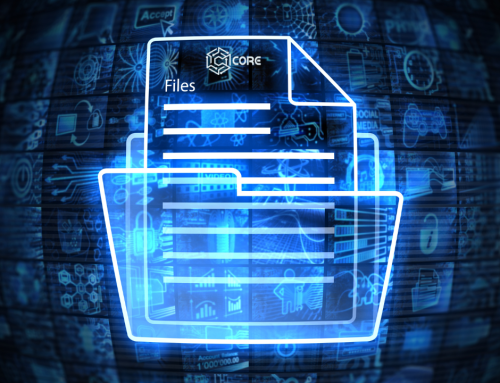How can I get the information I need? (automatically)
Where can I get the information I need? One of the most frequent requests that we get from our customers is to assist them with producing reports of some kind. The person coming to us, has usually been asked to provide a report of some kind either to a manager, owner or external party (FYI in case you don’t know, a report is information ‘pulled together’ from different sources into a readable format). In most cases, they have been producing a manual spreadsheet in Microsoft Excel, that they have to key data into each and every day, to make sure that the recipients of the report are able to review and understand what’s going on in the particular business area. The report goes backwards and forwards between the creator and the recipient, each time going through a round of changes that needed to be made because of some data error or some human error (as in it was keyed onto the spreadsheet incorrectly). Historically, the person in their role would have likely been doing the same thing but writing it down with good old fashioned pen and paper! The principles are the same, there is data (information) in one place, and it needs to be transposed into another place for another purpose. It’s one document being manually updated by 1 person with information from another source.
So you have to ask yourself, if the principles are the same and it’s creating the same problems, has the process actually been improved between Pen and Paper and Digitized Reporting?
What are we doing wrong?
In principal, there is nothing WRONG with the above approach, as long as you have the time and resource to sustain that practice forever! But, businesses grow and the resource intensity grows with it and there are some problems that we are creating for ourselves. If we are working within a business, that business exists solely to make money for one or more shareholders. If we are working within a charity, the charity exists solely to provide services to it’s service users. If the organisation (of either kind) is spending more time (and money) on administration, it can earn less money for it’s shareholders and provide less services to it’s service users. So how are we wasting time on these administration areas?
- Double Entry. If data is being picked up by a human from one system (the source system or book) and keyed (or written) into another (the destination system or book), that takes time. It’s already been keyed onto one system (presumably) by a human and now it’s being done again. It’s double data entry and costs double the time and effort.
- Out of date Data. It is out of date. The minute you key it onto a new platform, the old platform is being updated by other people in the business and your new spreadsheet is getting out of date immediately.
- Error Prone. Humans are not good at performing to a high-degree of accuracy, even when copying one thing to another. So, the data isn’t accurate.
- Untrustworthy. Once data is copied from one place to another, which location or system is the ‘source of truth’?
- Strategic thinking. It reduces strategic thinking. Everyone is so focused on getting the data into and out of the spreadsheet and isn’t thinking about how the business can improve.
What can we do to improve? (no/low cost)
Technology has moved on. Almost all the places where you store your data as part of your business processes, will allow you to ‘export’ that data into a spreadsheet format in seconds. That data can easily be reported on and can be trusted at the point of export, because it’s an exact copy of the data that was in the main system. Systems for finance, such as Sage (50 & 200) & Xero for example, make this easy. Systems for sales and job management such as Microsoft Dynamics and Salesforce make life equally easy when exporting data.
So, by moving forwards with some simple changes to an ‘export’ style of reporting that will cost the business very little (or nothing), have we solved the previously listed problems? Or have they stayed the same? Find out in the list below.
- Double-entry. Using export tools means we are no longer double-entering data. And so, it saves Time.
- Out of date data. Whilst on the face of it, it might seem to solve this problem, it doesn’t. From the moment the data is exported from the source system, the source system is continuing to get updated and so the exported data is outdated.
- Error Prone. Exporting the data should solve the problem of error prone data. It should be an exact replica.
- Untrustworthy. Whilst on the face of it, it might seem to solve this problem, it doesn’t. Again, because you have two ‘sources of truth’ neither can be fully trusted.
- Strategic thinking. It does help with this situation as it reduces the ‘involved’ time. But it doesn’t solve it as time is still being spent checking the data is up to date and so on.
Whilst the change to an export style has made some improvements and solved some of our problems, it might also have created additional problems. What might they be? Find out in the list below.
- Formatting & Layout. You are limited to exporting the data in exactly the same format as the source system will allow, the source system decides on what things you are allowed to export and what they look like when they are exported.
- Multiple sources. You cannot easily put data from different sources onto one spreadsheet (as you could if a human was manually bringing the data from one or more systems) because you are limited to what the source system allows you to do.
What can we do to solve these problems? (cost involved)
Well, in this area, we’re going to talk about a solution that will involve technical people. It’s not necessarily something that you can do yourselves, but it is something that most technical people will be able to help you with.
Most modern software systems that exist today are able to use an API. What is an API? We answer that question on a different page if you follow the link above. But in simple terms an API is a common language. It allows two different systems to “talk” to each other in a way that both sides understand.
More and more organisations are using API’s to their advantage in the exact scenario that we describe above. They are working with a third party software provider of some kind that helps them to translate between multiple systems (languages) to pull their data into one central location that can be used to report from. This third-party is essentially building what is commonly referred to as “Middleware”. Think of this like 3 people. Person One Is an external partner and speaks English (but no other language), Person Two is an external partner and speaks French (but no other language) and Person Three speaks both English and French and also German. Everyone in the business speaks German. Person’s one and two can pass their words (or data) to Person Three. Person Three converts all words (and data) to German. Now everyone in the business can understand what both Person One and Person Two are talking about and they can read / listen / watch the data in a common language, even though it started in a language that neither understood. Middleware is acting in the same way – converting computer code that exists in third party systems, into a language that your staff can all understand.
The Middleware sits there and requests information from all of your different systems. You might for example have one system that is used for HR, one that’s used for Finance, one that’s used for Service Delivery (jobs) and so on. All of these systems operate in their own unique way and are written in different coding languages. It pulls this data into the central platform and ‘connects’ the data together in some way. For example, you might want to know how many Jobs have been completed by a particular person, or team of people and what the value of each job was. Or what its profitability was. To do that, you might need to know what the value of the job was (from the finance systems), how many hours were spent on it (from the service delivery system), how many people were working that day (from the HR system) and so on.
The middleware is constantly ‘sync-ing’ this data from each of the source systems so it’s always up to date. It would also have a reporting engine connected which will provide the management with visual (or line-by-line) reports that easily point out where attention is needed. Tools like PowerBI are perfect for this.
OK so if implemented correctly, what impact does that have on the 7 problems we identified earlier across both sections?
- Double Entry. This problem is solved. The data is entered by the team that usually enter it. It’s not transferred anywhere by a human.
- Out of Date Data. This problem is solved. The data is being constantly refreshed from all of the sources and so is constantly up to date.
- Error Prone. This problem is solved. The data is an exact match to the source system.
- Untrustworthy. This problem is solved. Because it’s an exact match, it can always be trusted.
- Strategic Thinking. The solution allows for the senior business members to think more strategically about how to move the business forward, because all areas of the business can be considered all at once and they can consider it using visual aids that help them to think more clearly.
- Formatting. This problem is solved. The data can be changed into whatever format you want it to be in, once it’s brought into the middle.
- Multiple Sources. This problem is solved. The data can be pulled from as many places as you like, provided the source has an API system.
So, what’s the conclusion? Has technology moved on and helped businesses address their problems?
The overarching answer is yes BUT businesses need toUse the right system, for the right purpose at the right time.
If you put the data into the correct system, for the correct purpose, at the correct time, and utilise API’s to pull that data into one central reporting repository, you move your business forward at a much faster rate. It’s much easier to find problems in your business and rectify them, because you are no longer relying on manual processes. Instead you are focussing your attention on where it’s needed – the numbers.
The downside of all of this can be cost – on the face of it. Most software providers will charge in some way for access to their API. The costs can vary wildly. However, in our experience, the cost of using the API, and the cost of the development of the “middleware” is MUCH cheaper in the long run, than continuing to pay people to do the work manually and in a less effective way. The only thing that really needs to be considered is how long the new solution is going to take to return on your investment. Usually, this can be measured in weeks or months.
Our Solution
Our CORE Software platform has the ability to connect to many different outside software solutions. It is able to pull data into a central place and is also able to push data into the popular PowerBI reporting platform. It has a simple to use interface, meaning that there is a low training cost associated with it.
If you have ‘data puzzles’ or ‘process puzzles’ in your business, don’t hesitate to get in touch. We’ll be able to help you to get to grips with the problem and to solve it! It’s what we do, or rather it’s what CORE does. CORE – Solving your Business Puzzles and allowing you to use your brain power to improve your business! Contact Us to find out more today!











